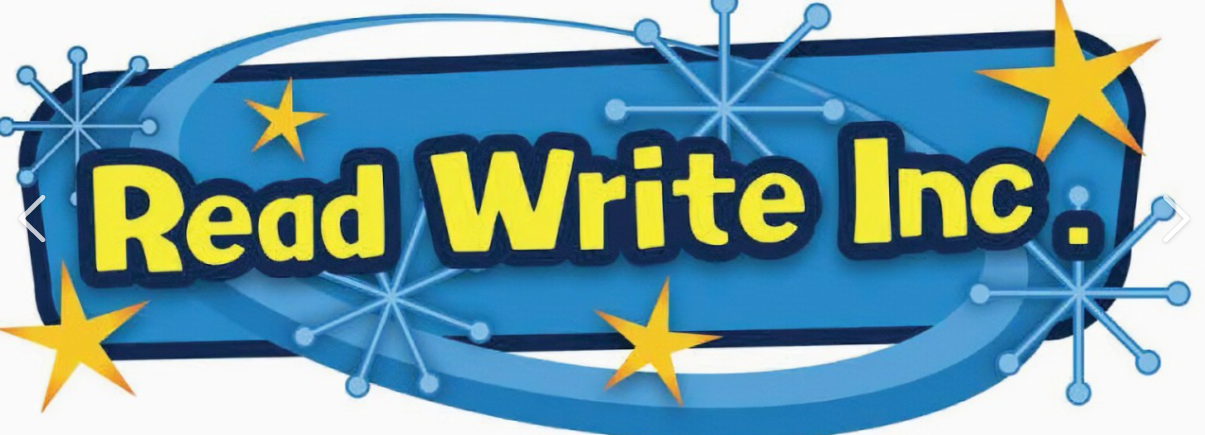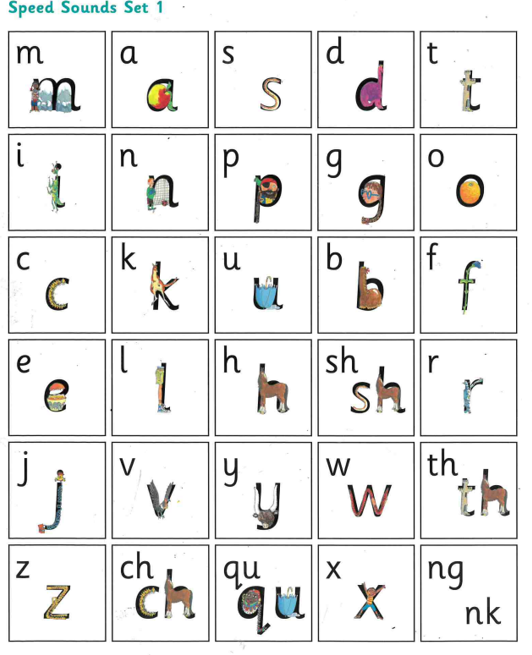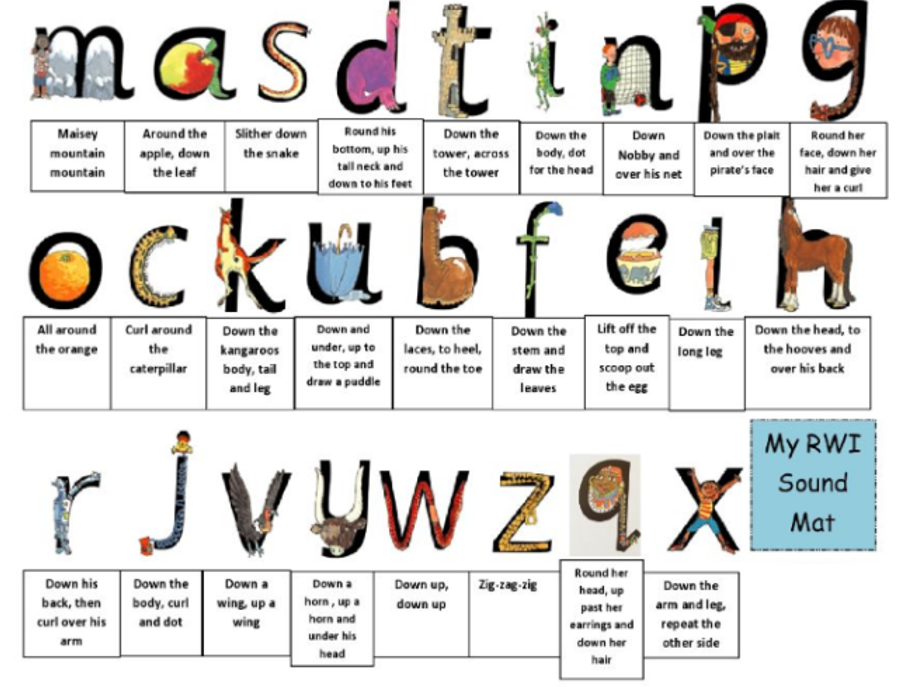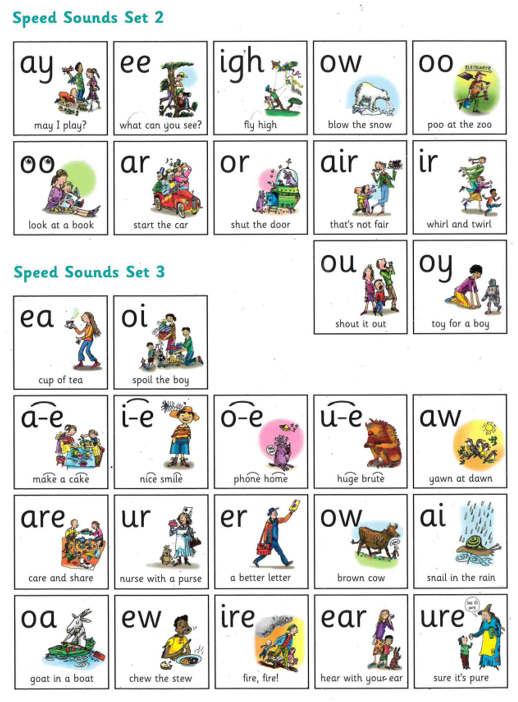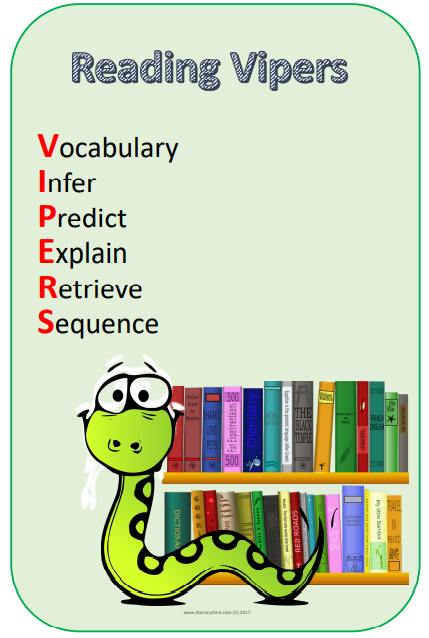Phonics
Read Write Inc
At Flintham Primary School we use the Read Write Inc (RWI) programme to get children off to a flying start with their English. RWI is a method of learning centred around letter sounds and phonics, and we use it to aid children in their reading and writing.
Reading opens the door to learning. A child who reads a lot will become a good reader. A good reader will be able to read more challenging material. A child who reads challenging material is a child who will learn. The more a child learns, the more he or she will want to find out.
What is Read Write Inc?
Read Write Inc (RWI) is a phonics complete English programme which helps all children learn to read fluently and at speed so they can focus on developing their skills in comprehension, vocabulary and spelling. The programme is designed for children aged 4-7. However, at FPS we begin the programme in Early Years and will continue teaching RWI to children beyond the age of 7 if they still need support in their reading. RWI was developed by Ruth Miskin and more information on this can be found at Parents and Carers - Ruth Miskin Literacy.
How will RWI be taught?
All children are assessed regularly by our RWI lead teacher and grouped according to their ability. This allows complete participation in lessons and ensures children are successful with their reading, therefore developing confident and resilient readers.
Early Years: When appropriate, children will be introduced to the initial sounds in short five minutes sessions.
Reception: In Reception all children will learn how to ‘read’ the sounds in words and how those sounds can be written down.
Using RWI, the children learn to read effortlessly so that they can put all their energy into comprehending what they read. It also allows them to spell effortlessly so that they can put all their energy into composing what they write.
When using RWI to read the children will:
– learn that sounds are represented by written letters
– learn 44 sounds and the corresponding letter/letter groups using simple picture prompts
– learn how to blend sounds
- learn to read words using Fred Talk
– read lively stories featuring words they have learned to sound out
– show that they comprehend the stories by answering questions
When using RWI to write the children will:
– learn to write the letters/letter groups which represent 44 sounds
– learn to write words by saying the sounds in Fred Talk
– write simple sentences
Talking
The children work in pairs so that they:
– answer every question
– practise every activity with their partner
– take turns in talking and reading to each other
– develop ambitious vocabulary
Year One & Year Two
Children follow the same format as Reception but will work on complex sounds and read books appropriate to their reading level. Daily sessions of RWI phonics last for half an hour. Once children become fluent speedy readers they will move on to literacy in Year Two.
Children will be taught how to read as follows...
Fred Talk
We use pure sounds (‘m’ not’ muh’,’s’ not ‘suh’, etc.) so that your child will be able to blend the sounds into words more easily. At school we use a puppet called Fred who is an expert on sounding out words! We call it, ‘Fred Talk’. E.g. m-o-p, c-a-t, m-a-n, sh-o-p, b-l-a-ck.
The children are taught the sounds in 3 sets.
Set 1 Sounds are taught in the following order together with rhymes to help children form the letters correctly and instantly recognise sounds ready for blending.
Please do not use letter names at this early stage. Children will also use pictures for each sound to help recognise the sound and then form the shape of the sound (see image below)
After the children learn to read some of the early set 1 sounds, we start to work on orally blending two or three sounds together E.g. c-a-t - cat. We play lots of games during this time to encourage the children to blend words together. We might say to them 'Go and get your c-oa-t' or 'Now it is time for l-u-n-ch.'
The children will come home with individual sound cards to practise and then when they are ready, a word time sheet to practise simple words. Once they are confident with most of set 1 sounds, we then introduce the children to 'ditty's.' Ditty's are short simple phrases and sentences linked directly to the sounds that the children have been taught in Set 1. Once the children are confidently reading these, we then move them onto red books. They will come home with a red book that they have practised in school and also a red book bag book.
The children are then taught Set 2 Sounds – the long vowels. When they are very confident with all of set 1 and 2 they are then taught Set 3 Sounds. The children progress from red books to green and then to pink and so on, until they reach the final colour which is grey. Your child will come home with books that are linked to sounds we have taught them. Within all the books, children will have red and green words to learn to help them to become speedy readers. Red words are words that are not easily decodable; they have a tricky part to them which doesn't follow the sounds that they have been taught. We teach the children to recognise the tricky part of the red words. Green words are linked to the sounds they have been learning and are easily decodable.
Nonsense words (Alien words)
As well as learning to read and blend real words children will have plenty of opportunities to apply their sound recognition skills on reading ‘Nonsense words’. These words will also feature heavily in the Year One Phonics Screening check in the summer term. Click here for further information on the Screening check. (opens in a new tab).
During the RWI weekly timetable, children will read their RWI book three times and at each new reading they will have plenty of opportunities to practise using their developing comprehension skills, build a bank of new and interesting vocabulary as well as trying to improve fluency.
Spelling Activities
Children will spell words linked to the target sound they are learning every day (This will only start in Reception when children are ready to write and form their letters). Children will use first use ‘Fred fingers’ to first sound out a word before they write it down. Children pinch each sound on their fingers before writing the word. Sound mats are also used to support spelling.
Keep up, Not catch up
If assessments identify a pupil who is falling behind the programmes pace, targeted support is given immediately. Same day one-to-one or small group tuition takes place with a trained TA. The RWI leader frequently discusses individual children with teachers. This allows teachers to ‘flag up’ any child they are concerned about.
What happens when a child has completed the RWI Program?
Once the children have completed the RWI program, they then move onto the RWI comprehension program. This is taught for half an hour a day, with one text being covered over a two-week period.
The RWI Comprehension programme:
- Uses the key teaching strategies in Read Write Inc. Phonics to maintain momentum and pupil progress
- Develops children's reading fluency and comprehension of fiction and non-fiction texts
- Improves children's writing by developing their vocabulary, grammar and spelling
The children move onto book banded books and are assessed for fluency and comprehension to check with book band level they will be on.
On top of the daily RWI phonics and comprehension sessions, Year 1 and Year 2 have a weekly whole class guided reading session, focusing on comprehension and fluency. We use the reading VIPERS to support these lessons – Vocabulary, Inference, Prediction, Explanations, Retrieval and Sequencing and key questions linked to each area to further develop a well-rounded reader. See below for further documentation about VIPERS.
Our Read Write Inc Lead Teacher in school is Mrs.Sharphouse. If you have any queries or would like to discuss our phonics programme further, please do not hesitate to contact her.

